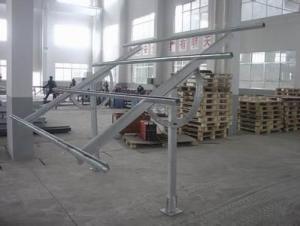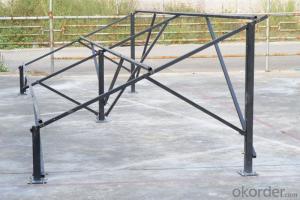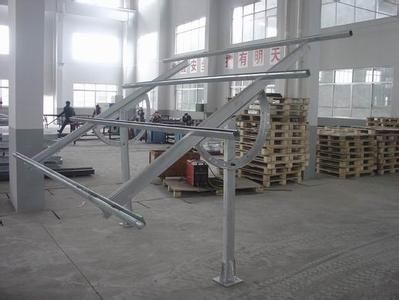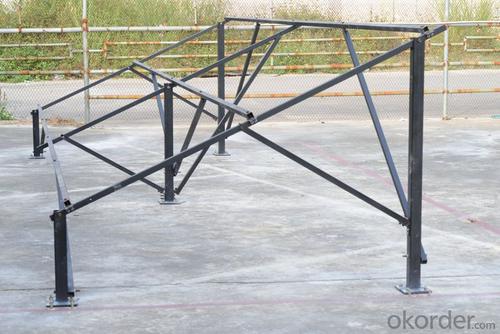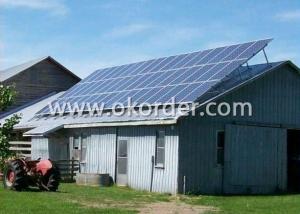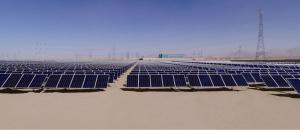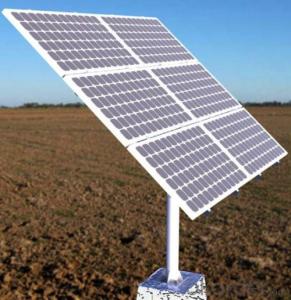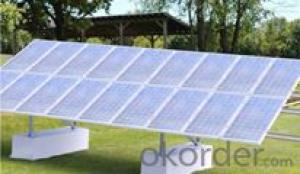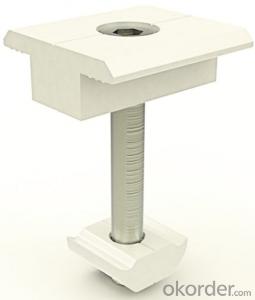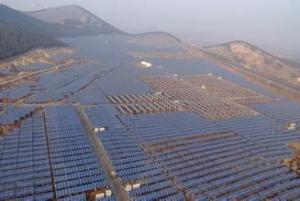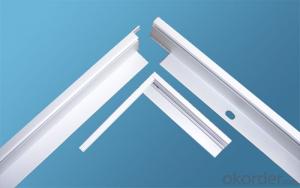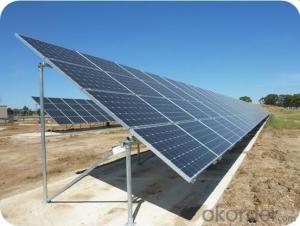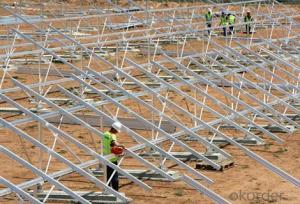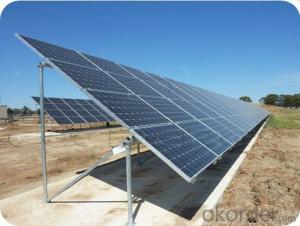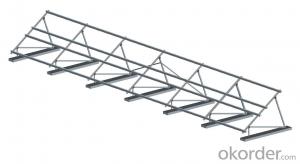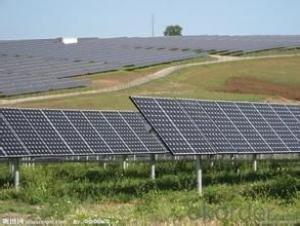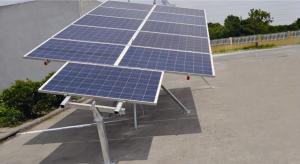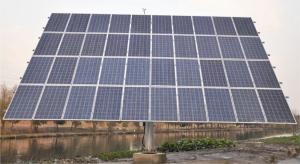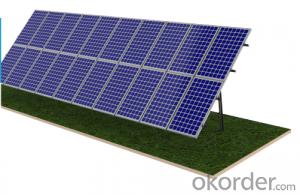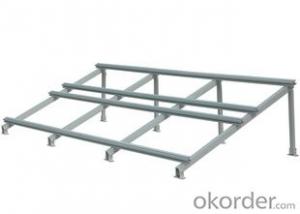Floating Solar Mounting System TT-SK-02
- Loading Port:
- Shanghai
- Payment Terms:
- TT OR LC
- Min Order Qty:
- -
- Supply Capability:
- 50万套 set/month
OKorder Service Pledge
OKorder Financial Service
You Might Also Like
PV Mounting brackets are special solar photovoltaic systemfor placing, installing, fixing the solar panel design. Generally materials arealuminum, steel structure, stainless steel. PV mounting products at groundmounting system, flat roof mounting system, adjustable angle roof rack system,inclined roof rack system, column bracket system.
The Ground Mounting System including concret basement sysytemand steel pipe sysytem, Titanergy provides total solution for flat or pitchedroof with patent products.On the basis of the given project data, specificnational standards and guidelines, Titanergy will calculate the completestructural analysis and create a complete project plan to make sure reliablestructural safety.We provide high quality HDG steel and aluminum products forthe ground mounting sysytem,witch can make sure the security and durability ofthe project.
Features and Advantages
n The rail bracket is easy to install, just use simple tools(eg, Allen wrench) can be easily installed. Rail connecting member can freelyadjust the length, the stent may be pre-installed on the roof, and thenappropriately adjusted according to the size of the solar panel.
n The combination of strong, aluminum rails and card blocks fora variety of venues and a variety of materials roofs (such as metal, ceramicand other kinds of tile surface)
n Component compatibility, and rail can meet PV modules fromdifferent manufacturers.
n accuracy, the length of the rail to the nearest millimeter,the construction process, not because of the length is too long or too shortfor the second cut.
n flexible assembly, rail hooks can adjust the spacing modulearray and tile has been installed successfully address the uneven roofconstruction led to difficult problems.
n design standards, product design and development process instrict accordance with GB, the German standards and other internationalstandards to ensure products reach the world advanced level.
n Quality assurance, the stent main material is high-qualityaluminum and stainless steel, effectively prevent corrosion of oxidation.Products can be recycled, reducing environmental pollution.
n Carried out strictly according to the current specificnational standards
n Perfectly optimized components and complete structuralanalysis for the sysytem
n High corrosion resisitance ensure the stability and highdurability
n Total test and certification make sure the high quality ofthe products
n Maximum pre-assembled in factory,quick mounting onsite,timesaving
10-year durability warranty
Technical Data
n Design Period:25 years
n Installation Site: Open area
n Array Angle:10°~60°
n ModuleType:Framed or unframed
n Material:Q235B,Al 6063-T5,Al 6005-T5,StainlessSteel A2-70
n Coating:HDG/Anodised
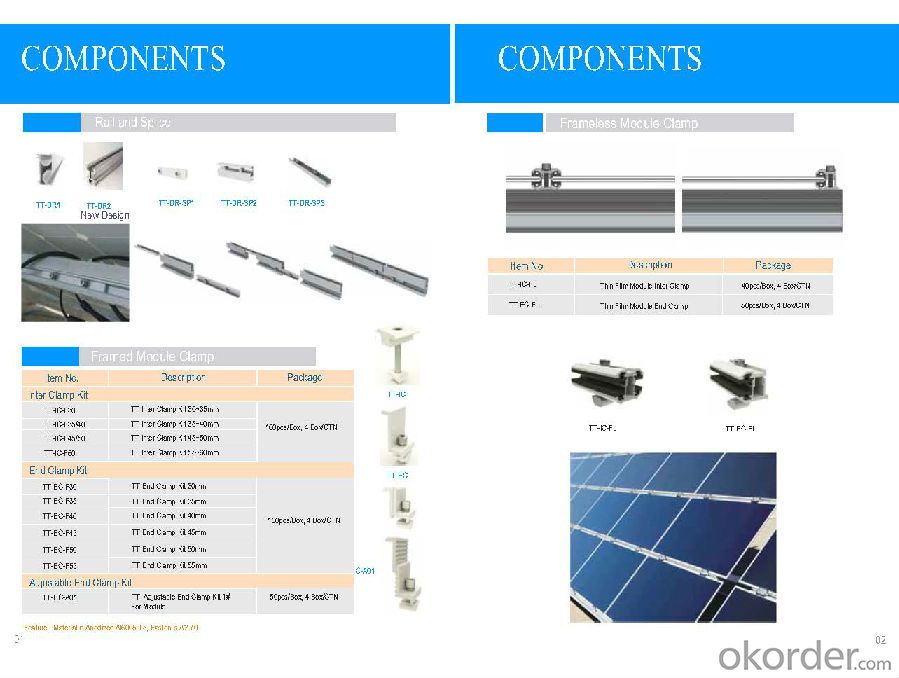
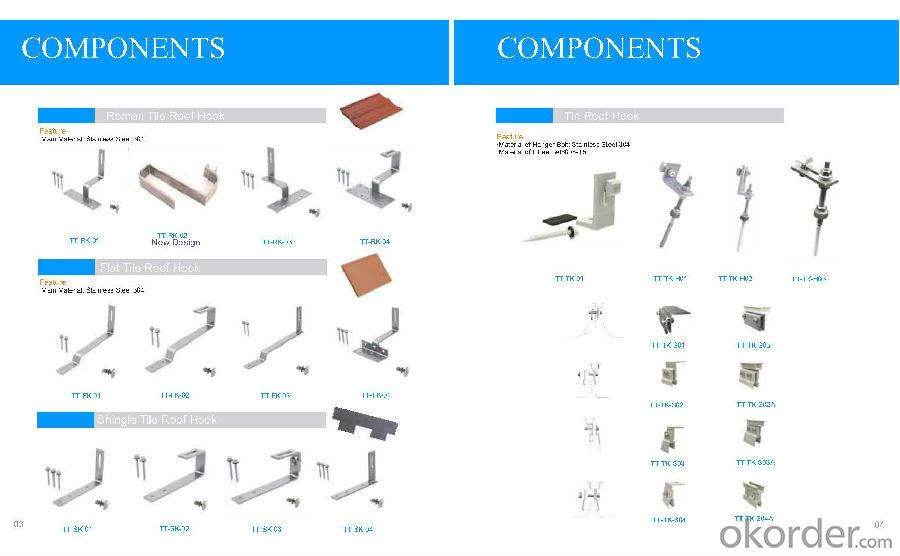
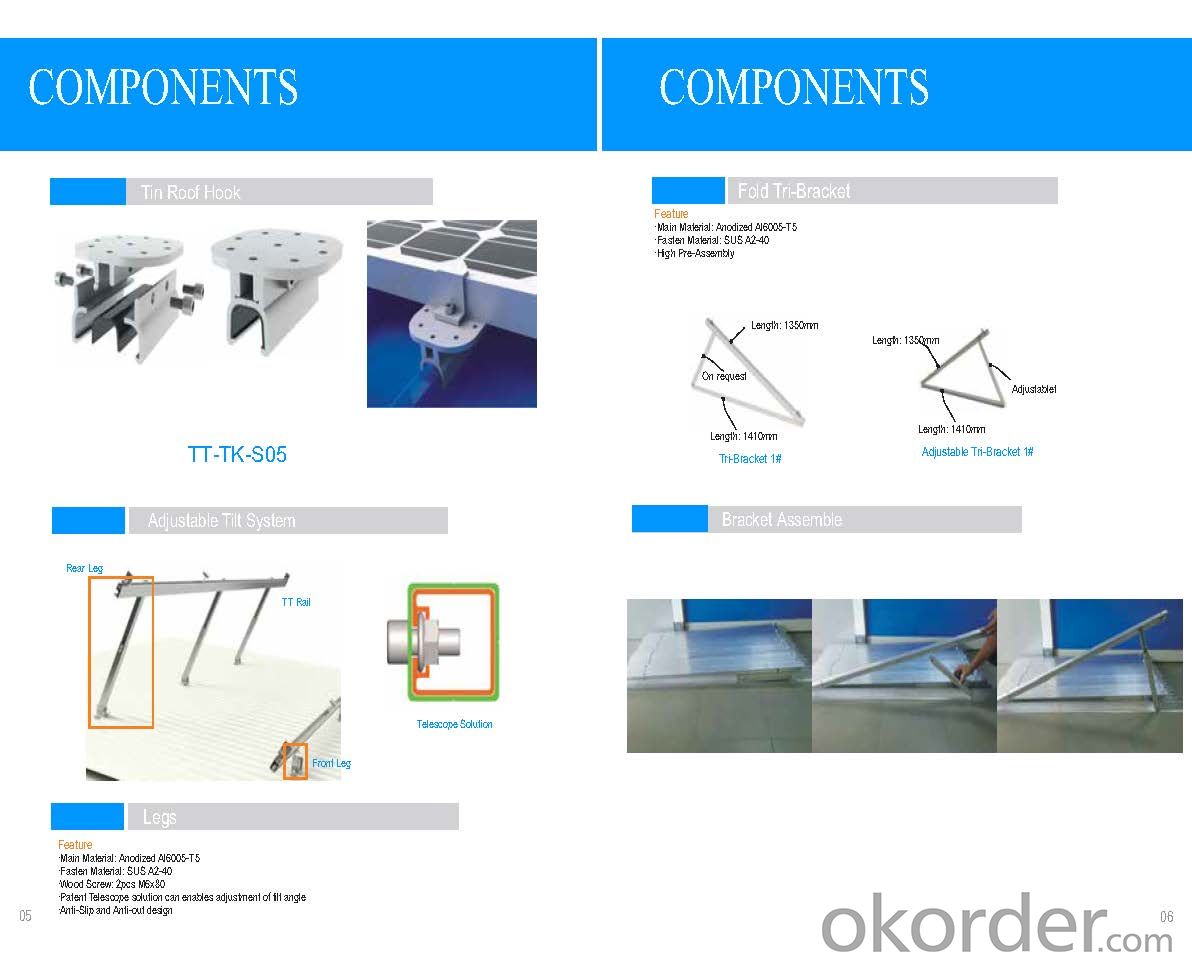
- Q: Are there any specific requirements for installing a solar mounting system on a rooftop with HVAC units?
- Yes, there are specific requirements for installing a solar mounting system on a rooftop with HVAC units. Firstly, it is important to ensure that there is enough space available on the rooftop to accommodate both the solar panels and the HVAC units. Additionally, the structural integrity of the rooftop should be evaluated to ensure it can support the weight of both systems. Proper clearance and spacing should be maintained to prevent shading of the solar panels by the HVAC units. It is also crucial to consider the electrical connections and potential interference between the two systems. Consulting with a professional installer or engineer can help ensure that all the necessary requirements are met for a successful installation.
- Q: How do solar mounting systems affect the aesthetics of a building?
- Solar mounting systems can have a significant impact on the aesthetics of a building. While some people may find them visually appealing and consider them a statement of sustainability, others may find them less attractive and believe they detract from the overall design. The size, shape, and placement of the solar panels, as well as the type of mounting system used, can all influence the visual impact. However, advancements in solar technology have allowed for more streamlined and integrated designs that can blend seamlessly with the building's architecture, reducing the visual impact and enhancing the overall aesthetics.
- Q: What are the different types of solar mounting systems?
- There are several types of solar mounting systems available, including roof-mounted systems, ground-mounted systems, pole-mounted systems, and tracking systems. Roof-mounted systems are the most common and are installed on the roof of a building. Ground-mounted systems are installed on the ground and can be adjusted to the optimal tilt angle. Pole-mounted systems are mounted on a single pole and are often used in remote locations. Tracking systems use motors to adjust the angle of the solar panels throughout the day to maximize sunlight exposure.
- Q: Can a solar mounting system be used with solar-powered cooking systems?
- Yes, a solar mounting system can be used with solar-powered cooking systems. The solar mounting system is designed to support and secure solar panels to harness sunlight for energy generation. Solar-powered cooking systems rely on solar energy, so by mounting the cooking system's panels on a solar mounting system, it ensures optimal exposure to sunlight, maximizing the efficiency of the cooking system.
- Q: How does a solar mounting system affect the roof's ventilation requirements?
- A solar mounting system can affect the roof's ventilation requirements by potentially obstructing airflow and reducing the natural ventilation of the roof. This is because the solar panels and the mounting structure can create a barrier on the roof's surface, limiting the airflow and potentially causing heat buildup. As a result, it may be necessary to modify or enhance the roof's ventilation system to ensure proper airflow and prevent potential issues such as moisture buildup or reduced energy efficiency.
- Q: Can a solar mounting system be used in desert environments?
- Yes, a solar mounting system can be used in desert environments. In fact, desert environments are often considered ideal for solar installations due to the abundance of sunlight and minimal shading. However, special considerations need to be taken into account such as dust accumulation and extreme temperature variations, which may require additional maintenance and design adaptations.
- Q: How does the tilt angle of a solar mounting system affect its performance?
- The tilt angle of a solar mounting system significantly affects its performance. By adjusting the tilt angle, the solar panels can optimize their exposure to sunlight. The optimal tilt angle typically depends on the latitude of the installation site. A proper tilt angle ensures maximum solar energy absorption and increases the system's overall efficiency.
- Q: Are there any disadvantages to using a solar mounting system?
- Yes, there are a few disadvantages to using a solar mounting system. Firstly, the installation cost of a solar mounting system can be quite high, especially for larger installations. Additionally, the system requires regular maintenance to ensure optimal performance, which can add to the overall cost. Furthermore, the positioning and angle of the panels are crucial for maximum efficiency, so if there are obstructions or shading in the surrounding area, it can significantly reduce the system's output. Lastly, extreme weather conditions such as strong winds or heavy snow can pose a risk to the structural integrity of the mounting system if it is not properly designed and installed.
- Q: Can a solar mounting system be installed on a membrane roof?
- Yes, a solar mounting system can be installed on a membrane roof. However, it requires careful consideration and expertise to ensure that the installation is done correctly without compromising the integrity of the roof. Proper waterproofing and structural support are essential to prevent any leaks or damage to the roof. It is advisable to consult with professionals who specialize in solar installations on membrane roofs to ensure a successful and safe installation.
- Q: Are there any specific requirements for installing a solar mounting system on a water body?
- Yes, there are specific requirements for installing a solar mounting system on a water body. Some key considerations include the type and size of the water body, its depth, water quality, and environmental regulations. Additionally, the mounting system should be designed to withstand water-related challenges such as corrosion, wave action, and fluctuating water levels. Adequate anchoring, buoyancy, and waterproofing mechanisms are essential for a successful installation on a water body.
Send your message to us
Floating Solar Mounting System TT-SK-02
- Loading Port:
- Shanghai
- Payment Terms:
- TT OR LC
- Min Order Qty:
- -
- Supply Capability:
- 50万套 set/month
OKorder Service Pledge
OKorder Financial Service
Similar products
Hot products
Hot Searches
Related keywords
